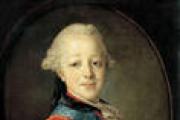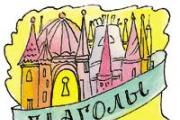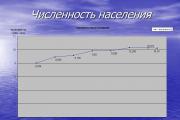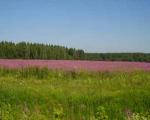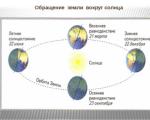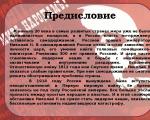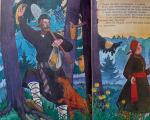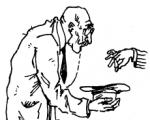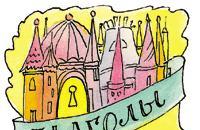The Estonian Armed Forces or the Estonian Defense Army (Estonian Eesti Kaitsevägi), a military structure of the executive state power of the Republic of Estonia, subordinate to the Government of the Republic and managed by the Ministry of Defense. Together with the Estonian Defense League, the Defense Army is part of the Estonian Defense Forces.
The Estonian Defense Army is built on the principle of common defence, its tasks include preserving the sovereignty of Estonia, protecting its territory, territorial waters and airspace as an integral and indivisible integrity, constitutional order and public safety.
The functioning of the Estonian Defense Forces is carried out on the principles of civilian control and is linked to the democratic organization of the state. The democratically elected and appointed executive bodies make decisions about the use of the Defense Forces and determine the corresponding goals, allocate the necessary resources and monitor the achievement of the goals. The implementation of the principles of civil control is guaranteed by law and is entrusted to the Parliament, the President of the Republic and the Government of the Republic. In wartime, the Supreme Commander of the Defense Army is the President of the Republic, and the governing body is the National Defense Council, consisting of the Chairman of Parliament, the Prime Minister, the Commander of the Defense Army, the Minister of Defense, the Minister of Internal Affairs, the Minister of Foreign Affairs and the Chairman of the Parliamentary National Defense Committee. Executive power in the management of national defense is exercised by the government of the republic.
Structure
The Estonian Defense Forces consist of land, sea and air forces, logistics, as well as component units, headquarters and establishments. To fulfill its mission, the Defense Forces and operational structures have organized professional training and administrative structures. The average size of the Defense Force in peacetime is 5,500, of which almost 2,000 are conscripts. The planned defense operational structure consists of up to 16,000 people, with 30,000 men being replenished. The operational structure of the mobilization achieved in the implementation of full size. It is proposed to reserve a year in training and count more than 2,000 conscripts, and also proposed an armed reserve of about 1,500.
Ground troops

The army is the largest military type of government. The army is vital for the defense of Estonia's territory and organizations in preparation for external operations. The Army's priorities are rapid response units and the overall goal of counterforces, host nation support, and territorial development support structures. If necessary, provide assistance to the army tsiviilorganisatsioone suffered as a result of human activities or natural disasters.
In service are: 88 armored personnel carriers ( 7 Mamba; 58 XA-180 Sisu, 20 BTR-80, 2 BTR-70; 1 BTR-60 and at the same time it is planned to purchase an additional XA-180 BTR); 335 artillery pieces, Mistral MANPADS and anti-aircraft installations.
The Army Commander, under the direction of his execution in support of the command and control components of headquarters and troops, is time for peace in the preparation of the reserve unit. Bourse is under the operational command of the army's territorial battalions, consisting of reservists and the 1st Infantry Brigade. Crisis and war, war and the tasks of the army command are responsible for planning, preparation, however, the practical task of protecting the area.
1. An infantry brigade is one of the basic military maneuver units, which includes a lot of military service during the taught units. The brigade consists of a professional armed force consisting of infantry battalions of rapid reaction reconnaissance battalions. The group may act in cooperation with NATO väeüksustega. It also includes 1 brigade and rear infantry battalion of the Kalevi Battalion.
Air Force

The Air Force is the main branch of the Estonian air force, which plays an important role in increasing the safety of flights in Estonian airspace. One of the main goals of the Air Force is to establish an air surveillance system that will become the cornerstone of air traffic safety and airspace control and to develop the air surveillance system to a level that allows close cooperation with the NATO air defense systems.
The Air Force is armed with 4 R-44 helicopters and two An-2 helicopters. An Agusta AW-139 was also purchased.
The Estonian Air Force is slow to reform because the infrastructure and funds to support it are lacking. All equipment placed on the territory by the Soviet Army was removed during the period of secession of the Republic of Estonia or destroyed by the inept actions of the organizers of the new Estonian Army. The Estonian Air Force was re-established in 1994. The Air Force was rebuilding the destroyed military infrastructure abandoned by the Russian army. Most of the funds were allocated to the Ämari military airfield, around which it will be completed in 2010. The goal of developing Ämari Air Base is to collaborate with NATO and partner nations and enable air forces to supply standardized airfield and aircraft services needed to support the host nation. Due to the lack of modern military aviation and developed infrastructure, the development of the air force was very slow.
Navy

The Estonian Navy is responsible for all maritime operations and security in Estonian territorial waters. The main functions of the naval forces are the preparation and organization of the defense of territorial waters and coastlines, ensuring the safety of maritime navigation, communications and maritime transport in territorial waters and cooperation, together with NATO navies and other friendly countries in the surrounding area. In the event of a crisis situation, the fleet must be ready to defend approaches, port areas, sea lines of communication by sea, and cooperate with coalition units. The Navy includes units of patrol ships, Sapper, Fregate and coast guard units, necessary to ensure the safety of maritime communications and clear lines and establish ment barriers. The current structure operates a delivery move to the department, which also includes a group of divers. In addition, there is a Naval Academy, a naval base in the Mining Seaport and whose headquarters are located in Tallinn.
The Defense Union is a voluntary military national defense organization that operates under the authority of the Ministry of Defense. Defense Union Demons have weapons and participate in military exercises. The main goal of the Defense League, based on citizens' free will and initiative, is to increase the state's readiness to defend its independence and constitutional order, including in the event of a military threat. The Defense Union plays an important role in supporting civilian structures. Its members help put out forest fires, act as volunteer police assistants, and ensure security at various events. The nodes consisted of voluntary members of the Defense League, as well as participation in international peacekeeping operations both in the Balkan states. The Defense Alliance and related organizations have positive relationships with partner organizations in the Nordic countries, the United States and the United Kingdom. The organization consists of 15 divisions, the Defense Union's regional areas of responsibility mainly coincide with the boundaries of the Estonian counties. Today the Defense Union has more than 12,000 members. Affiliated organizations of the Defense League bring together more than 20,000 volunteers.
Organization

The various stages of completion of the operational units of the Estonian defense, which is configured for professional armed forces, reservists and security members, were presented. Military service, having in its composition reserve units, they are recruited from among the personnel in the future readiness of the subjects to the composition of the Permanent Commission for the Defense of the League. The operational base for defense in peacetime is that the armed forces are trained as reserve units. A resource-poor country, it has the advantage that the approach described in connection with the need for reservists to leave in peacetime for maintenance with their own lives, and only the costs of state training.
The Army Reserve is easy to mobilize public opinion, since the reserve is already accustomed to working with subordinates and being concentrated, quickly moving into larger units. The Army Reserve has the advantage of being closely associated with the citizens because it includes a majority of male citizens who are willing to defend the homeland from attack. However, the military structure of a fully professional armed force consists of units on their side, and those that have completed only a portion of the defense professional positions. Only the largest professional armed forces created by the Scout Battalion Group, but part of the cadre unit of the armed forces, for example, the 1st Infantry Brigade Headquarters. The brigade headquarters, as soon as possible, if necessary, however, is fully staffed with other specialists working in the reserve officers and all employees.
Main Headquarters of the Defense Army
In peacetime, the Estonian Defense Army and the Defense Union are led by the Commander of the Defense Army (Estonian: Kaitseväe juhataja), in wartime - by the Supreme Commander of the Defense Army (Estonian: Kaitseväe ülemjuhataja). The Commander of the Defense Army is appointed and dismissed by the Riigikogu (Parliament) on the proposal of the President of the Republic of Estonia. Since December 5, 2006, the post of Commander of the Defense Army has been occupied by Lieutenant General Ants Laaneots.

The governing body of the Estonian Defense Army is the General Headquarters of the Defense Army (Estonian Kaitseväe Peastaap). The General Headquarters of the Defense Army is responsible for the operational leadership, training and development of the Defense Army. Operational leadership is exercised by operational personnel who plan and control operations and ensure defense readiness and mobilization. The Training and Development Department is responsible for long- and medium-term planning, resource planning, organization and control of training planning and implementation of national defense activities. Main The headquarters of the Defense Army is headed by the Commander of the Defense Army.
According to the defense long-term development plan, the navy will receive new military capabilities. Of these new warfare capabilities, the procurement of multi-role fast patrol boats will be a priority. Operational it is cloudy to such vessels to ensure the protection of territorial waters and improve maritime surveillance.
According to the new long-term development plan for the current air defense battalion will be gradually modernized as one of the top priorities of the armed forces is to develop air defense capabilities to ensure. In accordance with the plan, some medium-range mobile air defense units will be created and developed as, along with the existing army, short-range air defense capabilities will be expanded through the purchase of additional weapons systems, as well as the creation of new air defense units.
Sources:
1. Estonian Armed Forces
Support
I've always been interested theme of armies and weapons of various countries. Recently, I have become interested in the state of the armies of states that were formed after the collapse of the USSR in the post-Soviet space. The next target of my study was the Estonian armed forces. The Estonian Defense Force is the military structure of the executive branch of government of Estonia, which is administered through the Ministry of Defense.
In addition to the Defense Army, the Defense Forces include the Estonian Defense Union. The Estonian Defense Army is called upon to defend the sovereignty of the state of Estonia, the protection of its territory and the thermal waters belonging to Estonia, as well as airspace. In addition, the army is charged with maintaining constitutional order and public safety.
ESTONIAN ARMED FORCES: OPERATION
The functioning of the armed forces is carried out taking into account the principles of civilian control, as well as taking into account the democratic principles of state building. Civil control is guaranteed by relevant state legislation and is vested in the government, parliament and president. During wartime, the commander-in-chief of the Armed Forces is the president, and the governing body during this period is the National Defense Council, which includes the head of parliament, the prime minister, the commander of the Defense Army, the minister of defense, the head of the Ministry of Internal Affairs and the head of the Ministry of Foreign Affairs.
The recruitment of the armed forces is carried out in accordance with current legislation. All young men between the ages of 18 and 28 who do not have an exemption are required to complete military service for eight months. And whoever connects his life with the Estonian Armed Forces has a very good pension in Estonia as a result.
Estonia's military doctrine was adopted in 2001.
, according to which, to carry out defensive actions, it is possible to attract foreign citizens who permanently reside on the territory of the Estonian state. The Estonian army took part in the war in Afghanistan as part of an interethnic armed force. During the entire period of participation in the armed conflict in Afghanistan, nine soldiers were killed and more than 130 were injured.
Since 2006, a center has been established within the Estonian Armed Forces
, whose tasks include ensuring Internet security. On the basis of this center, it is planned to create a center to combat cyber dangers in the future. The strength of the Estonian armed forces in peacetime is five and a half thousand, of which about 2,000 are conscript soldiers. The reserve of the Estonian army is about 30 thousand people, in addition to the reserve there are another 12 thousand people who are in one and a half dozen squads.
The Estonian armed forces include ground forces, air force and naval forces. The country's military budget is about 5 billion US dollars, which is almost 2 percent of the state's GDP. In accordance with the plans for the development of the armed forces, it is planned to carry out work aimed at strengthening the country's navy, which is planned to be achieved through the acquisition and commissioning of multi-purpose patrol boats.
It is also planned to reform the infantry brigade of the Estonian ground forces into a motorized infantry brigade. It is also planned to reorganize one and a half dozen infantry battalions into five battalions and five companies engaged in reconnaissance. Creation and deployment of an air defense division.
Initially, the equipment that Estonia inherited after the collapse of the USSR was used as weapons in the Estonian army. Since 1992, the state army began to be equipped with equipment in service in Eastern European countries, as well as in NATO countries. Germany supplied Estonia with two L-410 transport aircraft, 8 boats, about two hundred vehicles and about 180 tons of military equipment. The Estonian army received one ship from the Swedes, and the Norwegians provided the country's army with military equipment.
Estonian Armed Forces ( Eesti sõjavagi) began to form in November 1918 on a voluntary basis and numbered 2,000 people at that time. By 1920, the size of the Estonian army had increased to 75,000 people.
In 1918 – 1920 The Estonian army fought against the Red Army of the RSFSR, the Estonian Red Army ( Eesti Punakaart) and the German Iron Division (German volunteers) of General Count Rüdiger von der Goltz ( Rüdiger Graf von der Goltz). About 3,000 Estonian military personnel died during the fighting.
For 20 years, from 1920 to 1940, the Estonian Armed Forces did not participate in hostilities.
Since October 1928, the Law on Military Service was introduced in Estonia, according to which its duration was determined at 12 months for infantry, cavalry and artillery and 18 months for technical branches of the military and navy.
On September 1, 1939, there were 15,717 people in the Estonian Armed Forces (1,485 officers, 2,796 non-commissioned officers, 10,311 soldiers and 1,125 civil servants). According to mobilization plans, the wartime army was to consist of 6,500 officers, 15,000 non-commissioned officers and 80,000 soldiers.
In September 1939, the territory of Estonia was divided into three divisional military districts.
Since 1921, the Estonian officer corps was trained for three years at the Military School ( Sojakool), founded in April 1919. To advance to staff officer ranks (from major and above), training was required at the General Staff Courses created in August 1925 ( KindralstaabiKursus) or the Higher Military School ( Kõrgem Sõjakool). A number of senior officers of the Estonian Armed Forces were educated at military academies in France, Belgium, and Sweden. There were non-commissioned officer schools at the division headquarters ( Allohvitseride kool). Since 1928, special courses have been created for the training of reserve officers.
The structure of the Estonian Armed Forces was as follows:
Higher military command. The Supreme Commander-in-Chief of the Estonian Armed Forces was General Johan Laidoner ( Johan Laidoner), who headed the Defense Council. Subordinate to him was the Minister of Defense, Lieutenant General Nikolai Reek ( Nikolai Reek) and Chief of the General Staff General Alexander Jaakson ( Alexander Jaakson).
Ground Army. According to peacetime states, the Estonian Land Army included three infantry divisions.
To the 1st Infantry Division (3,750 people) under the command of Major General Alexander Pulk ( Aleksander-Voldemar Pulk) included: one infantry regiment, two separate infantry battalions, two artillery groups (18 guns), a regiment of armored trains (three trains and one battery of railway guns), Narva stationary artillery batteries (13 guns) and a separate anti-tank company.
To the 2nd Infantry Division (4,578 men) under the command of Major General Herbert Brede ( Herbert Brede) included: one infantry regiment, one cavalry regiment, four separate battalions, two artillery groups (18 guns) and two separate anti-tank companies.
The 3rd Infantry Division (3,286 people) included: six separate infantry battalions, an artillery group, and two separate anti-tank companies.
It also included an Autotank Regiment led by Colonel Johannes Wellerind ( Johannes August Vellerind), which included 23 armored vehicles and 22 tanks (and wedges). The tanks were represented by four British vehicles MK-V and twelve French Renault FT-17. In 1938, Estonia purchased six wedges from Poland TKS.
In 1940, the formation of the 4th Infantry Division began under the command of Colonel Jaan Maide ( Jaan Maide), which was not completed.
In 1939, the Estonian army was armed with 173,400 rifles, 8,900 pistols and revolvers, 496 submachine guns and 5,190 machine guns.
Air Force. The Estonian military aviation was consolidated into an air regiment, which included:
– 1st Air Division – seven aircraft Hawker Hart;
– 2nd Air Division – two aircraft Letov Š.228E and five planes Henschel Hs.126;
– 3rd Air Division – four aircraft BristolBulldog and one plane AvroAnson.
There was a flying school attached to the air regiment.
The commander of the Estonian Air Force was Richard Tomberg ( Richard Tomberg).
Naval forces. Member of the Estonian Navy ( Eesti Merevägi) included two submarines - Kalev And Lembit, two patrol ships Pikker And Sulev, four gunboats Vanemuine, Tartu, Ahti And Ilmatar, two minelayers Ristna And Suurop. The commander of the Estonian Navy was Captain-Major Johannes Santpunk ( Johannes Santpunk).
Paramilitary forces. Estonian Border Guard ( Eesti piirivalve) since 1922 was subordinate to the Ministry of Internal Affairs, it was headed by Major General Ants Kurvits ( Ants Kurvits).
The border guard numbered 1,100 people, including more than 70 border guards working with sniffer dogs. The Estonian border was guarded by the Tallinn, Lääne, Pechora, Peipus and Narva branches, numbering 164 outposts and posts.
Paramilitary Militia Defense Association ( Kaitseliit) was formed in 1918. It was headed by General Johannes Orasmaa ( Johannes Orasmaa).
By 1940, the number of members of the Association reached 43 thousand men, in auxiliary units - 20 thousand women and about 30 thousand teenagers.
On August 30, 1940, the Estonian Army was reorganized into the 22nd Estonian Territorial Rifle Corps (180th and 182nd Rifle Divisions with a separate artillery regiment and air detachment) under the command of Lieutenant General Gustav Jonson ( Gustav Jonson), who on July 17, 1941 was arrested by the NKVD on charges of espionage. His position was taken by Major General Alexander Sergeevich Ksenofontov.
On August 31, 1941, the 22nd Estonian Territorial Rifle Corps as part of the Red Army was disbanded due to the fact that out of 5,500 people in its composition, 4,500 went over to the enemy. The remaining Estonian military personnel were sent to labor battalions stationed in remote areas of the North.
Just recently, in November, the Estonian army boasted of its invincibility. At the same time, the Estonians mocked the armed forces of Latvia, supposedly suitable only for “guarding sacks of flour in the rear.” The Latvian army was called “empty space” in these boastful reports.
In the article by Mikka Salu (“Postimees”) the armies of the two neighboring republics in numbers. If in Estonia today there are 5000-6000 military personnel in service, and in wartime 30-40 thousand can take arms, then in Latvia - 1.7 thousand and 12 thousand, respectively. The Estonian defense budget for 2009-2010 is 565 million euros , and the Latvians have only 370 million euros. And if the valiant Estonians, if necessary, begin to fight with machine guns, machine guns, mortars, artillery, air defense, anti-tank weapons and sit on armored personnel carriers (maybe even ride), then the Latvian fighters will be able to move on foot, running or crawling with machine guns and machine guns. Some lucky ones will get rare mortars.
In this situation, the Estonians were seriously worried that in the event of an attack by some aggressor-tyrant like Lukashenko, they themselves would have to defend their southern border: the Latvian army, that is, an “empty place”, would not help them.
Estonians wrote in the same newspaper:
“The defense forces of Estonia and Latvia, which started on the same line twenty years ago, now find themselves in a diametrically opposite position. The Latvian defense forces are completely unprepared for the fight. They can neither defend their country nor cooperate internationally. Estonia's southern border is defenseless."
While spitting at their Baltic neighbor and simultaneously praising their valiant army - both quantitatively and qualitatively - the Estonians forgot to knock on wood and spit three times over their left shoulder.
And here you go.
Suddenly, an economic crisis hit Estonia with such ferocity that it was decided to almost abolish the army. Due to the sharp impoverishment of the country, it is planned to abandon new helicopters, high-speed boats, a military camp in Yagala, abolish a number of headquarters and cover four defense districts. Now, of course, the Latvians will find something to answer to their Estonian brothers.
It fell to the same Mikku Sal to write an article about drastic changes in the army of his native country. And where did the former euphoria go?
The program for the development of Estonia's military defense for the next ten years, recently presented to the parliamentary commission on national defense, provides for this and that, but first of all, the journalist bitterly says, it talks about reductions and cutbacks. Needless to say, if it is planned to abolish the headquarters of the Ground Forces, the headquarters of the Navy and the headquarters of the Air Force. At the same time, the new program will abolish four defense districts. The Estonian army will be forced to refuse large supplies provided for by the previous program. The military will not receive any tanks, helicopters, or medium-range air defense missile systems. The fleet will be left without high-speed boats. No one (not even Russian Tajiks for half the price) will build a military camp in Yagala.
What to do with the enemies represented by Belarus and Russia? How can we now look into the face of the Latvian Minister of Defense, Artis Pabriks, who recently managed to adequately respond to Estonian boasts? Sleep well, fellow Estonians, - in approximately these words, Artis Pabriks is confident that the southern border of the Estonian state is safe.
And what now to do with the enemies of Latvia, who can easily invade its territory through defenseless Estonia? With what enemies, you ask? With the Finns, of course: after every St. Petersburg alcohol tour, they dream of annexing Estonia, so that later it would be easier to fight the Russians. Well, other fierce northern enemies may appear, say, entrenched in Spitsbergen and in secret collusion with the Greenlandic Eskimos.
As for Comrade Lukashenko, with the blessing of another comrade - Putin, he now intends to go through the entire Baltic region. The main thing here is to stop in time. Dad will have breakfast in Vilnius, share lunch with a friend in Riga, and give dinner to the enemy in Tallinn.
As hard-working journalist Mikk Salu found out, the rejection of the Ministry of Defense's previous plans seemed “abrupt” to the public because all previous plans were... utopian.
“Until now, large-scale and utopian plans have been hatched, not supported by anything. Behind these utopias there was an emptiness that was covered up with big words about state secrets,” said one knowledgeable official.
Anonymous officials and deputies call the new program “reasonable.” They believe that it can even be accomplished.
Behind the significant changes in the development of the defense forces, the journalist writes, two reasons are hidden. One of them is money. The second is also money, disgusting army leadership.
It turns out that in 2009 the country of Estonia rose to the very crest of economic recovery. All the countries in the world have fallen, but she has risen. Not otherwise, it was squeezed out like a bubble from the general mass that sank to the bottom. Tax revenues grew by more than 10 percent annually. At the beginning of 2009, Defense Minister Jaak Aaviksoo decided that 60 billion kroner (3.8 billion euros) should be spent on military needs. Another defense minister, Mart Laar, reported a year ago that there was one billion euros less money (2.8 billion). The current minister, Urmas Reinsalu, is trying to continue the line set by Laar.
While Estonians were arguing about whether to build an atomic bomb and drawing up other utopian projects, there was a massive distribution of financial resources from the state budget to anyone who asked.
“Everyone who wanted something got something. The ground forces want something - that’s fine, we’ll write it into the program for you. The Air Force wants it too - okay, you will get it too. The Navy is scratching under the door - well, what’s there, you’ll get it too.”
In November, the lively Salu wrote: the trouble with Latvia is that there is no conscript service in the army - there are only professional military personnel, but in Estonia there are conscripts, reservists, and professional military personnel. Journalist and boast about how good his family is:
“At the same time, Estonia is superior to Latvia in all respects, both quantitatively and qualitatively, we have more soldiers and they are better trained, we also have more equipment and it is of better quality.”
What can these - pfft - Latvian machine gunners do?
“The Latvian armed forces are essentially lightly armed infantrymen, which means they have machine guns, machine guns and mortars. In Latvia there are almost no armored personnel carriers, anti-tank equipment, artillery and air defense... Our fighting soldiers move on armored personnel carriers, and Latvians run on their own two feet.”
“In the end, a lot was done and nothing was done. There are plans to purchase medium-range missiles, but during exercises half of the officers communicate with each other on mobile phones because there are not enough communication systems.
There is talk about buying tanks, but as soon as the conversation turns to how, for example, in the event of the outbreak of war, moving the Viru infantry battalion to Sinimäe, everyone starts scratching their heads, do we have the vehicles to transport it, and even if we do, then where are they located and where can we get fuel, and will we have enough ammunition and cartridges for the third day of hostilities.
As a result, the armed forces of Estonia are impressive on paper and in their structure resemble the army of some large state, but in reality we are talking about a mass of men who have extremely light weapons.”
With daggers and bows, it must be.
How quickly “more soldiers and better trained” was reduced to “mass of men”!
What about quality technology? And here:
“The existing artillery base is very small, there are very few modern anti-tank forces, and short-range air defense forces against helicopters and low-flying aircraft are completely insufficient.
At the same time, there is not even normal communication or transport...”
Etc.
“The reality of the new development program, at least in the eyes of its compilers, should lie precisely in the fact that before doing big things, first eliminate all those minor shortcomings and gaps (in their totality they form one giant gap) that are now giving rise to know".
Apparently, what Mikk Salu described is considered “minor flaws” in Estonia. In short, Estonians should rejoice if Latvians, in the event of an attack by Lukashenko’s troops or the advance of hordes of Greenlanders, will take the bravest residents of Tallinn to guard the carts with flour.
Mr. Salu notes in passing that there were also “completely radical ideas” - for example, “the liquidation of the Estonian naval forces.” Fortunately, they were not included in the development program.
Well, Moscow was not built right away... Leading experts in the field of world economics promise a continuation of the financial crisis for at least the next ten years. It seems that the Baltic brothers from Estonia, Latvia and Lithuania have the same fate: the complete abolition of not only intermediate headquarters, but the armed forces in general.
As for the atomic bomb, it is doubtful that Estonia will suddenly produce leaders of such oriental cool as Kim Jong-un (male sex symbol of 2012, according to Onion magazine) and Mahmoud Ahmadinejad (the main patron of the peaceful nuclear program in Iran and secret ally of Kim Jong-un).
In order not to disgrace his officers running around the training fields with cell phones in search of horse-drawn transport, the President of Estonia recently announced a new program of the Ministry of Defense, cutting everything and everyone, as “ambitious.”
On December 10, President Toomas Hendrik Ilves met with the Minister of Defense Urmas Reinsalu and the Commander of the Defense Forces, Brigadier General Riho Terras, who gave him, the Commander-in-Chief, a read on the new program planned for the 10 years ahead. In the first year, reduce this, in the second year, abandon it, in the third year...
And here's what our favorite newspaper Postimees says about it:
“The President expressed gratitude to officials of the Ministry of Defense and officers of the General Staff for setting ambitious, but at the same time realistic, accurate, justified and feasible tasks.
“The findings and justifications presented by the Minister of Defense and the Chief of Defense Forces were compelling. “Estonia has a good national defense development program that is grounded in reality,” Ilves said.”
The immediate event of the new “ambitious” program will be the withdrawal of troops from Tallinn. All military units will be from the capital of the republic. The deputies are keeping the location of their new location a secret for now. They are probably afraid of Russian Iskanders and the plans of Comrade Putin, who, they say, is tormented by nostalgia for the USSR.
However, it’s easy to guess: probably Urmas Reinsalu and Artis Pabriks have already agreed on everything, and the Estonian soldiers are secretly moving south, closer to the border Latvian barns...
Estonian Armed Forces ( Eesti sõjavagi) began to form in November 1918 on a voluntary basis and numbered 2,000 people at that time. By 1920, the size of the Estonian army had increased to 75,000 people.
In 1918 - 1920 The Estonian army fought against the Red Army of the RSFSR, the Estonian Red Army ( Eesti Punakaart) and the German Iron Division (German volunteers) of General Count Rüdiger von der Goltz (Rüdiger Graf von der Goltz). About 3,000 Estonian military personnel died during the fighting.
For 20 years, from 1920 to 1940, the Estonian Armed Forces did not participate in hostilities.
Estonian artillerymen
Since October 1928, the Law on Military Service was introduced in Estonia, according to which its duration was determined at 12 months for infantry, cavalry and artillery and 18 months for technical branches of the military and navy.
On September 1, 1939, there were 15,717 people in the Estonian Armed Forces (1,485 officers, 2,796 non-commissioned officers, 10,311 soldiers and 1,125 civil servants). According to mobilization plans, the wartime army was to consist of 6,500 officers, 15,000 non-commissioned officers and 80,000 soldiers.
In September 1939, the territory of Estonia was divided into three divisional military districts.
Since 1921, the Estonian officer corps was trained for three years at the Military School ( Sojakool), founded in April 1919. To advance to staff officer ranks (from major and above), training was required at the General Staff Courses created in August 1925 ( KindralstaabiKursus) or the Higher Military School ( Kõrgem Sõjakool). A number of senior officers of the Estonian Armed Forces were educated at military academies in France, Belgium, and Sweden. There were non-commissioned officer schools at the division headquarters ( Allohvitseride kool). Since 1928, special courses have been created for the training of reserve officers.

Military School Banner

Johan Laidoner
The structure of the Estonian Armed Forces was as follows:
Higher military command. The Supreme Commander-in-Chief of the Estonian Armed Forces was General Johan Laidoner ( Johan Laidoner), who headed the Defense Council. Subordinate to him was the Minister of Defense, Lieutenant General Nikolai Reek ( Nikolai Reek) and Chief of the General Staff General Alexander Jaakson ( Alexander Jaakson).
Ground Army. According to peacetime states, the Estonian Land Army included three infantry divisions.
To the 1st Infantry Division (3,750 people) under the command of Major General Alexander Pulk ( Aleksander-Voldemar Pulk) included: one infantry regiment, two separate infantry battalions, two artillery groups (18 guns), a regiment of armored trains (three trains and one battery of railway guns), Narva stationary artillery batteries (13 guns) and a separate anti-tank company.
To the 2nd Infantry Division (4,578 men) under the command of Major General Herbert Brede ( Herbert Brede) included: one infantry regiment, one cavalry regiment, four separate battalions, two artillery groups (18 guns) and two separate anti-tank companies.
The 3rd Infantry Division (3286 people) included: six separate infantry battalions, an artillery group, and two separate anti-tank companies.
It also included an Autotank Regiment led by Colonel Johannes Wellerind ( Johannes August Vellerind), which included 23 armored vehicles and 22 tanks (and wedges). The tanks were represented by four British vehicles MK-V and twelve French Renault FT-17. In 1938, Estonia purchased six wedges from Poland TKS.

Estonian tank crews. 1936
In 1940, the formation of the 4th Infantry Division began under the command of Colonel Jaan Maide ( Jaan Maide), which was not completed.
In 1939, the Estonian army was armed with 173,400 rifles, 8,900 pistols and revolvers, 496 submachine guns and 5,190 machine guns.
Air Force. The Estonian military aviation was consolidated into an air regiment, which included:
- 1st Air Division - seven aircraft Hawker Hart;
- 2nd Air Division - two aircraft Letov Š.228E and five planes Henschel Hs.126;
- 3rd Air Division - four aircraft BristolBulldog and one plane AvroAnson.
There was a flying school attached to the air regiment.
The commander of the Estonian Air Force was Richard Tomberg ( Richard Tomberg).

Aircraft of the Estonian Air Force
Naval forces. Member of the Estonian Navy ( Eesti Merevägi) included two submarines - Kalev And Lembit, two patrol ships Pikker And Sulev, four gunboats Vanemuine, Tartu, Ahti And Ilmatar, two minelayers Ristna And Suurop. The commander of the Estonian Navy was Captain-Major Johannes Santpunk ( Johannes Santpunk).

Estonian submarines
Paramilitary forces. Estonian Border Guard ( Eesti piirivalve) since 1922 was subordinate to the Ministry of Internal Affairs, it was headed by Major General Ants Kurvits ( Ants Kurvits).

Ants Kurvits

Johannes Orasmaa
The border guard numbered 1,100 people, including more than 70 border guards working with sniffer dogs. The Estonian border was guarded by the Tallinn, Lääne, Pechora, Peipus and Narva branches, numbering 164 outposts and posts.
Paramilitary Militia Defense Association ( Kaitseliit) was formed in 1918. It was headed by General Johannes Orasmaa ( Johannes Orasmaa)
By 1940, the number of members of the Association reached 43,000 men, 20,000 women and about 30,000 teenagers in auxiliary units.
On August 30, 1940, the Estonian Army was reorganized into the 22nd Estonian Territorial Rifle Corps (180th and 182nd Rifle Divisions with a separate artillery regiment and air detachment) under the command of Lieutenant General Gustav Jonson ( Gustav Jonson), who on July 17, 1941 was arrested by the NKVD on charges of espionage. His position was taken by Major General Alexander Sergeevich Ksenofontov.

Estonian militias
On August 31, 1941, the 22nd Estonian Territorial Rifle Corps as part of the Red Army was disbanded due to the fact that out of 5,500 people in its composition, 4,500 went over to the enemy. The remaining Estonian military personnel were sent to labor battalions stationed in remote areas of the North.
Õun M. Eesti sõjavägi 1920 - 1940. Tammiskilp. Tallinn, 2001.














